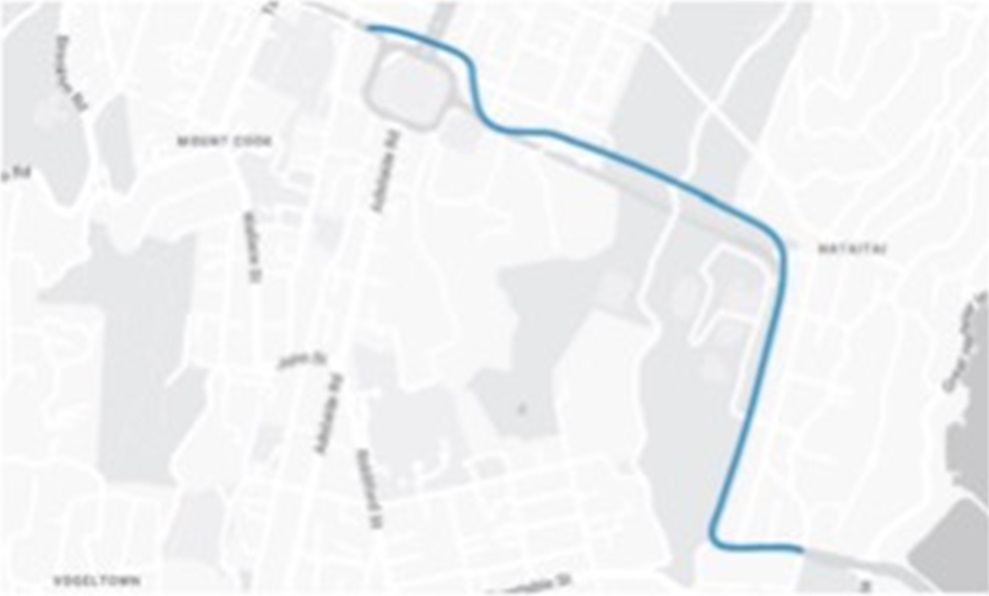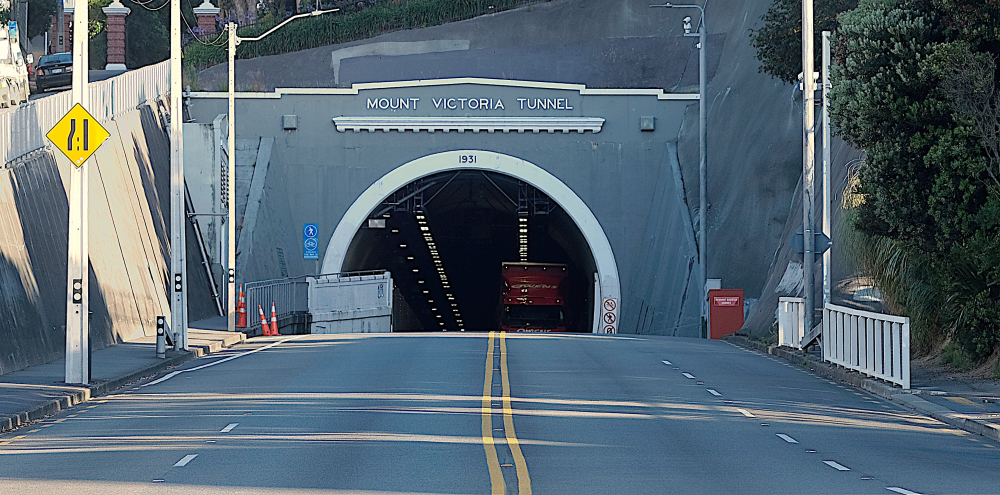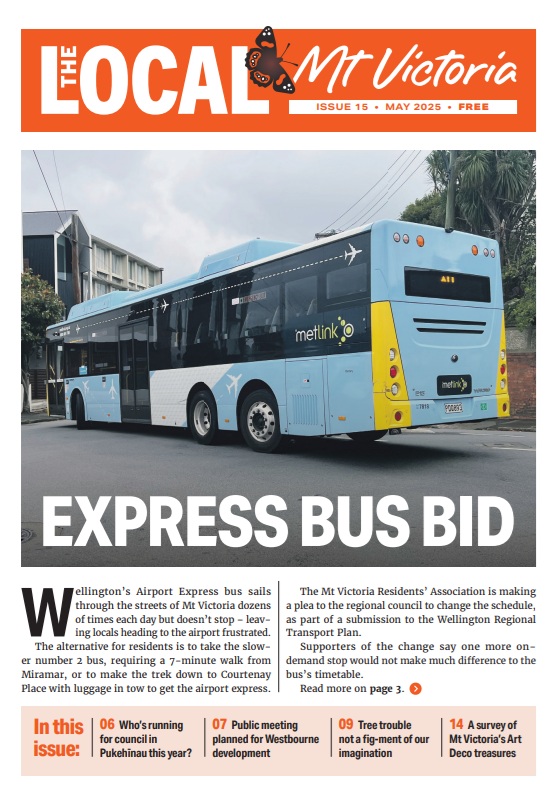
Patterson Street in Mount Victora has long been earmarked for tunnel development. This has has left it in limbo, with most houses in the lower area owned by NZTA, and lined up for potential demolition. But could the area be retained – and possibly rejuvenated - if the tunnel went diagonnally west under Mount Victoria instead?
The new National Government has announced that work will start on a second Mt Victoria tunnel within three years. National Party election documents stated the new two-lane tunnel will be ‘in parallel to the existing one’.
But when Let’s Get Wellington Moving previously consulted on various options for improvements around the Basin, these included both a parallel and a diagonal tunnel.
The parallel option to the north would presumably replace most of Patterson Street, and require the removal of around 14 houses along there, mostly already owned by NZTA/Waka Kotahi.
On the Hataitai side, it would likely mean the widening of Ruahine Street into the Town Belt.
National says the parallel tunnel will be cheaper than building a diagonal tunnel, though at an estimated $2.2 billion the pricetag is still eye-watering.
It may also have the advantage of existing geotechnical understanding, as a pilot tunnel to test ground conditions was dug several decades ago.

As part of its election promises, the National Party pledged to build a second, wider tunnel in parallel to the existing Mount Victoria tunnel. The second tunnel will provide two lanes for traffic travelling towards the airport, while the original tunnel will have two lanes for traffic travelling into the city. The project will also see upgrades around the Basin Reserve to remove north-south State Highway traffic from the roundabout, and the widening and upgrading of Ruahine St (and surrounds) to provide for "Four Lanes to the Planes”. A new walking and cycling connection will be constructed to provide for active transport in the new tunnel, located above the road and separated from traffic.
But a diagonal tunnel may have other things to recommend it.
The option for a diagonal tunnel would see it heading off towards the west from the existing tunnel entrance, and ending up at Wellington Road (avoiding the need to shave land off the town belt along Ruahine Street). It was expected to be around 1.2 km long, 500 metres longer than the existing Mt Victoria tunnel.
Wellington Regional Councillor Thomas Nash (a former Mount Victoria resident) said he didn’t think a firm decision had been made yet on the tunnel alignment, and he said it was hard to know how much housing would be lost until plans were done.
“A diagonal tunnel could be less disruptive and less negative in terms of housing than a parallel tunnel requiring existing housing and prime residential land owned by NZTA on Ellice, Brougham, Patterson to be replaced by roading infrastructure.
“Without seeing more detailed plans, I don’t have a strong view on whether a tunnel should be diagonal or parallel. The bigger question to me is how much every dollar spent on a new $2 billion plus road tunnel dedicated to road traffic will help the city in terms of facilitating more housing and facilitating better transport outcomes for the greatest number of people.”
Now that LGWM has been disbanded, the agency formerly known as Waka Kotahi is leading the project.
“It's now a 100% NZTA project but hopefully the decision making will include consultation with local people.”
Current ward councillors Iona Pannett and Nicola Young, who both live in Mount Victoria, have diametrically opposing views on the tunnel: Iona Pannett strongly opposes it, while Nicola Young says it’s well overdue.
A second Mt Victoria vehicle tunnel is a vital but missing piece of regional infrastructure for all the eastern suburbs, the airport and all the industries that depend on air freight, according to Nicola Young.
However she said she would prefer to see a ‘long’ tunnel constructed connecting Kilbirnie to State Highway 1 on the other side of the CBD, with off-ramp access at the hospital in Newtown – an alternative wild card option put forward by transport expert Greg Pollock.
“It would be incredibly expensive but it would mean Te Aro would no longer be sliced in two by State Highway One and that would open up great housing opportunities in the central city - away from the reclaimed land.
“It's ambitious but would solve so many issues.”
Fellow city councillor Iona Pannett was a leader in the campaign to stop the Inner City Bypass and a co-founder of Save the Basin that stopped the construction of a flyover at the Basin Reserve.
“Proposals for new inner-city roads are a 1960s concept that are still being promoted in the interests of supposed economic benefits from very small time savings for individual motorists and commercial drivers.
“In a time of climate change, building new roads to make way for cars fuelled by fossil fuels is one of the last things we should be doing.
A new Mt Victoria tunnel would create more local pollution, increase greenhouse gas emissions, make the community less safe for vulnerable road users, destroy heritage and undermine the sense of community built over generations, Iona Pannett says.



